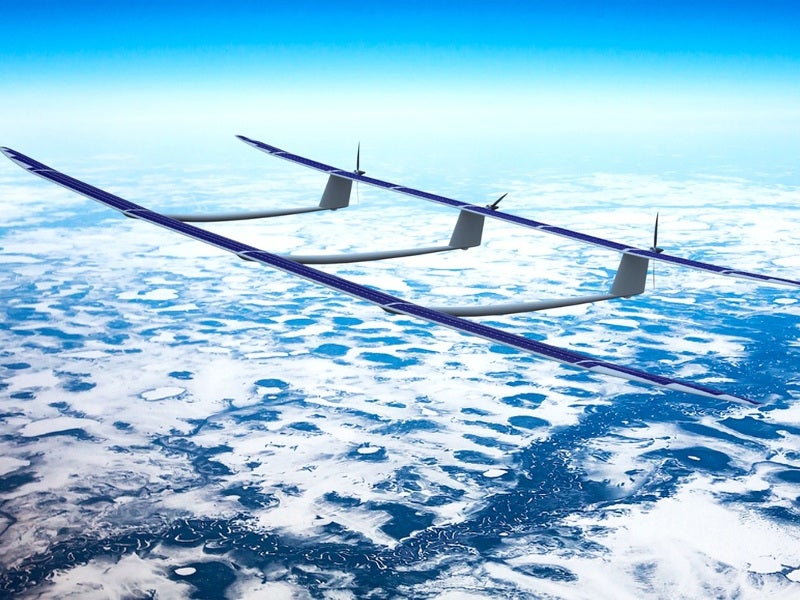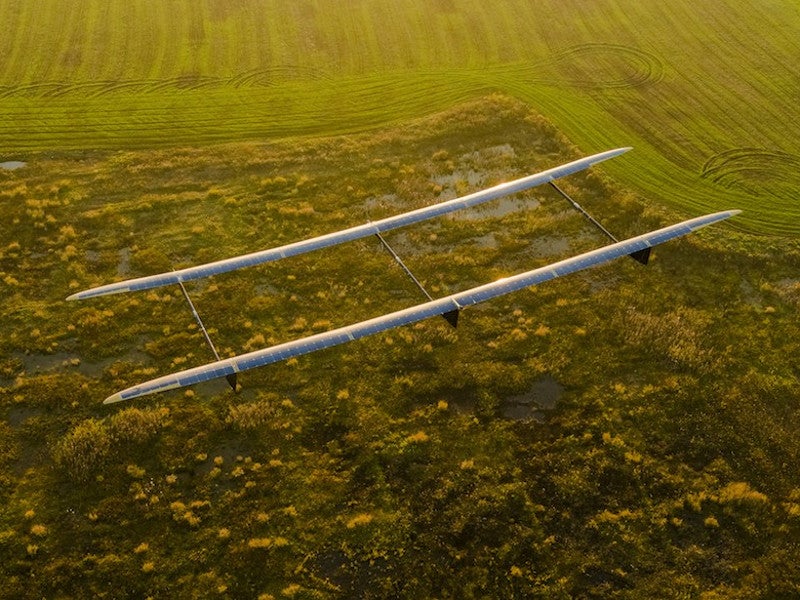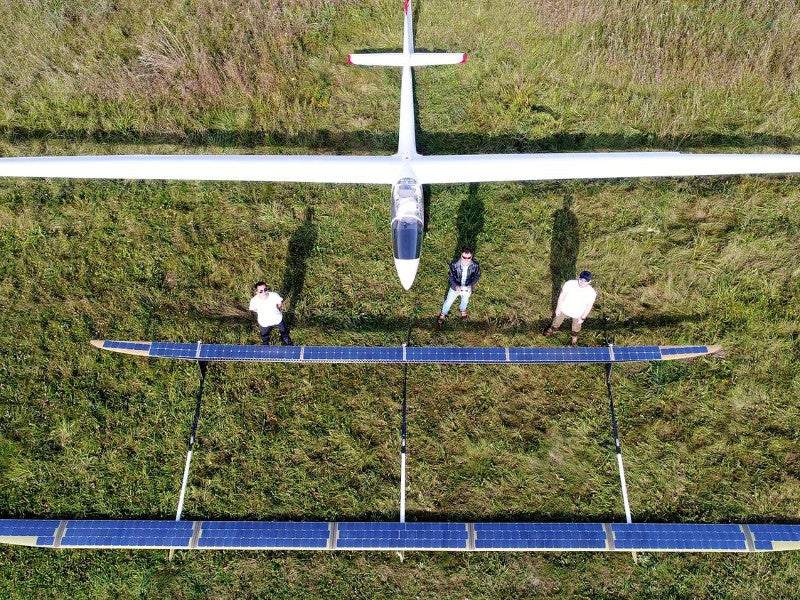ApusDuo 15 high-altitude pseudo-satellite (HAPS) is being developed by UAVOS, a manufacturer of unmanned vehicles and autopilot systems. The HAPS was unveiled at the Association for Unmanned Vehicle Systems International’s (AUVSI’s) Xponential 2018 trade show held in Denver, US, in May 2018.
UAVOS conducted a flight test of a larger, modified variant of its ApusDuo HAPS prototype in November 2019. The unmanned aerial vehicle (UAV) is designed to offer higher strength, lower weight, and longer endurance capabilities.
The new HAPS platform is intended for persistent operations for defence, security, surveillance, and other civilian purposes. It can perform real-time monitoring of the Earth’s surface and collection of valuable information for long durations.
ApusDuo 15 HAPS design and features
Built using carbon fibres, the new ApusDuo 15 HAPS prototype is 1.5 times larger than the older prototype. The HAPS aircraft features two wing structures covered with solar cells. The forward and rear wing structures are connected by three longitudinal booms. The solar-electric aerial vehicle combines the advantages of a satellite with the flexibility and resolutions of an unmanned aerial system.
The wing features controlled surfaces, which can change the angle of attack that governs the roll, pitch, slip, and V-shape of the aircraft. The autopilot system analyses the deformation characterisation of extended aspect-ratio of the flexible wing to alter the wing geometry.
The autonomous control distributes load across the wings and reduces the overall structural weight. It adjusts the lift at regular intervals and optimises the control of the vehicle in all flight modes.
ApusDuo 15 HAPS has a wingspan of 14m, while the serial production aircraft is expected to have a wingspan of 28m. The maximum take-off weight (MTOW) of the vehicle is 23kg. The HAPS is capable of operating in extreme temperatures ranging between -65°C and 55°C.
The pseudo satellite uses solar flight technology with its solar cells delivering an efficiency of 21%. It autonomously performs operations from runways using a fully-automated take-off and landing system and requires no ground-based landing equipment.
The target pointing and designation system aboard the UAV enable it to identify the location of fixed and mobile targets. The platform can also be used as a flying research and development (R&D) laboratory.
The pseudo-satellite can carry payloads weighing up to 2kg to ensure increased video surveillance and monitoring in extreme weather conditions, for long and extended durations.
ApusDuo 15 HAPS communication capabilities
ApusDuo HAPS supports drone communications systems and can extend the range of a radio link. It can also be used to provide broadband wireless access to private and corporate sites.
The equipment aboard the ApusDuo transforms it into a stratospheric telecommunications platform to deliver futuristic global connectivity, irrespective of the terrain.
ApusDuo 15 HAPS performance details
ApusDuo 15 HAPS is equipped with brushless DC motors powered by Li-ion battery modules. The electric motors drive three two-bladed propellers mounted at the forward wing. The vehicle can perform missions for up to 365 days at a latitude of 20°.
It has a maximum airspeed of 8m/s at sea level and 27m/s at an altitude of 15,000m above mean sea level (AMSL). It can reach a maximum altitude of 20,000m.
Upgrade in algorithm system resulted in improved efficiency of the UAV by reducing power consumption in a horizontal flight. The use of maximum power point tracking (MPPT) energy conversion controllers spilt the solar panels into small groups during low and unequal lighting conditions.
The elongated wing with its surface area and flexible aerodynamic property help the pseudo-satellite perform better in turbulent atmosphere. It can avoid stalls during manoeuvres at a low speed.






